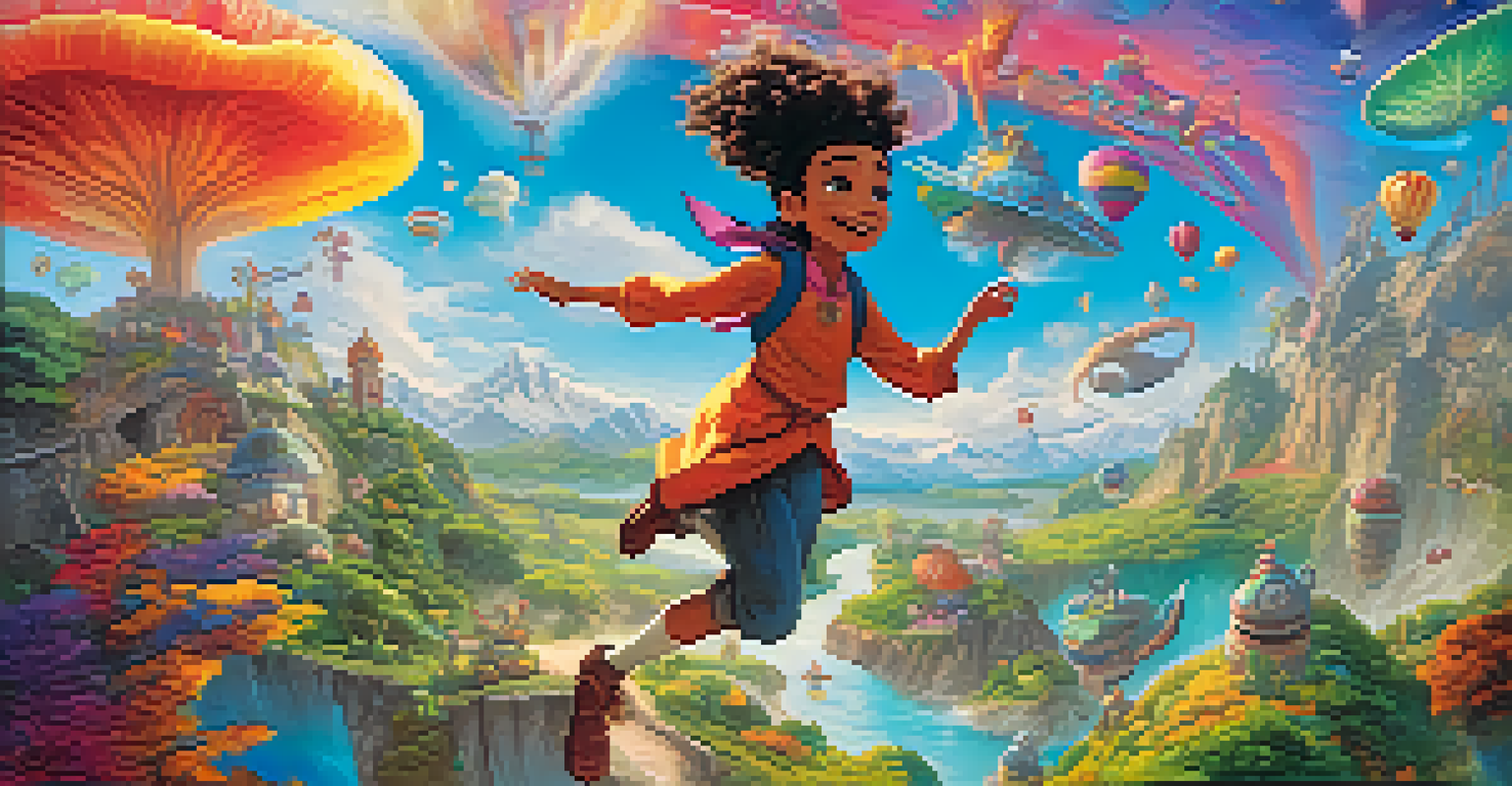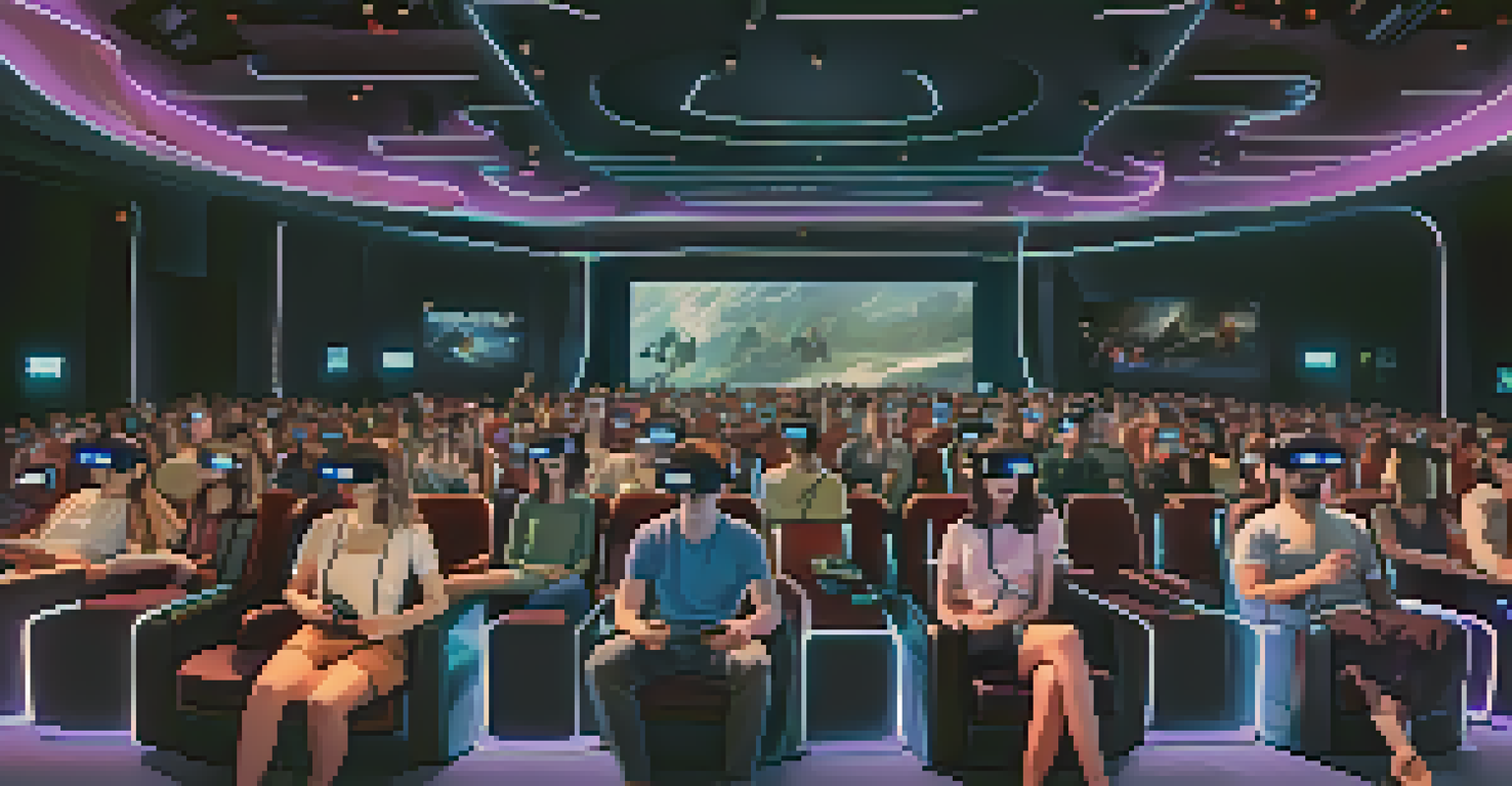Audience Participation: The Future of Interactive Movie Experiences

The Rise of Interactive Movies in Modern Cinema
In recent years, interactive movies have gained traction, captivating audiences with their unique storytelling approach. This new genre allows viewers to make choices that directly influence the plot, creating a personalized viewing experience. Think of it as a choose-your-own-adventure book, but on the big screen, where your decisions can lead to different outcomes.
The future of storytelling lies in the hands of the audience, and interactive movies are the canvas for that creativity.
Platforms like Netflix have already jumped into the fray with titles like 'Black Mirror: Bandersnatch,' which showcased the potential of audience-driven narratives. These experiences not only engage viewers but also invite them to become part of the story, fostering a deeper emotional connection. As technology advances, the possibilities for interactive storytelling are expanding rapidly.
The increasing popularity of interactive movies indicates a shift in how audiences want to consume content. People are no longer satisfied with passive viewing; they crave involvement and agency in the stories they love. This trend could very well mark the beginning of a new era in filmmaking.
How Technology is Enhancing Audience Engagement
Technological advancements play a pivotal role in the evolution of interactive movies. With the rise of smart devices, viewers can now interact through their smartphones or tablets, influencing the storyline in real time. This integration not only makes the experience immersive but also allows for multi-platform participation, where audiences can engage from anywhere.

Virtual reality (VR) and augmented reality (AR) are also pushing the boundaries of audience engagement. Imagine stepping into a film as a character, where your actions dictate the narrative flow. Such immersive experiences can redefine how we view cinema, making it a shared journey rather than a solitary experience.
Interactive Movies Are Gaining Popularity
Viewers are increasingly drawn to interactive movies that allow them to make choices, leading to personalized storytelling experiences.
As filmmakers embrace these technologies, they are creating dynamic narratives that adapt based on audience choices. This shift not only enhances entertainment value but also invites creativity and collaboration, fostering a community of viewers who share their experiences and outcomes.
The Role of Gamification in Interactive Films
Gamification is another key element driving the popularity of interactive movies. By incorporating game-like mechanics, filmmakers can enhance engagement and create a sense of competition among viewers. For instance, audiences might earn points or unlock content based on their choices, similar to video games.
In a world where viewers want to be participants, interactive films provide an engaging bridge between the audience and the narrative.
This approach transforms passive viewing into an active challenge, where every decision matters. It encourages repeat viewings, as audiences may want to explore different pathways and endings. Just like a favorite game, the allure of discovering new outcomes keeps viewers coming back for more.
Moreover, gamification can also strengthen social interactions, allowing viewers to discuss strategies and choices with friends. This sense of community not only enriches the viewing experience but also establishes a shared culture around interactive storytelling.
Challenges in Creating Interactive Movie Experiences
While the concept of interactive movies is exciting, it comes with its own set of challenges. Crafting a compelling narrative that allows for numerous branching paths requires meticulous planning and a deep understanding of storytelling. Filmmakers must ensure that each choice feels meaningful and that the overall experience remains cohesive.
Moreover, the production costs for interactive films can be significantly higher than traditional movies. The need for multiple storylines, scenes, and endings means that budgets must accommodate extensive planning and development. This can deter some studios from pursuing interactive projects, especially if they fear lower returns on investment.
Technology Enhances Audience Engagement
Advancements like VR and mobile integration are transforming how audiences interact with films, making them feel more involved in the narrative.
Additionally, there’s the challenge of viewer accessibility—some audiences may prefer traditional films without the added pressure of making choices. Striking the right balance between interactivity and storytelling is crucial to attract diverse audiences and ensure the success of this new format.
Audience Preferences and Expectations
As interactive movies evolve, understanding audience preferences becomes paramount. Viewers are increasingly looking for content that resonates with their personal experiences and emotions. By allowing them to influence the storyline, filmmakers can create a more engaging and relatable experience.
Surveys and studies indicate that many people enjoy the thrill of making choices, especially when those choices lead to emotional payoffs. This desire for agency is reshaping audience expectations, pushing filmmakers to innovate and adapt to these new demands. Understanding what viewers want is key to creating successful interactive narratives.
Ultimately, filmmakers must listen to their audiences and be willing to experiment with different formats. The more they understand their viewers, the better they can craft experiences that satisfy their cravings for engagement and personal connection.
The Future of Interactive Movies: What Lies Ahead
The future of interactive movies is bright, with endless possibilities for innovation and storytelling. As technology continues to evolve, we can expect more sophisticated experiences that blend traditional filmmaking with interactive elements. Imagine a world where every movie release includes multiple endings and plot twists based on audience choices.
Collaboration among filmmakers, game developers, and tech experts is essential to push the boundaries of what's possible. By combining their expertise, these professionals can create richer, more immersive experiences that captivate audiences on multiple levels. The blend of cinematic art and interactive play could redefine entertainment as we know it.
Gamification Boosts Viewer Participation
Incorporating game-like elements in storytelling creates a competitive edge, encouraging viewers to rewatch and explore different outcomes.
Furthermore, as audience participation becomes an integral part of filmmaking, we may see new genres emerge that focus exclusively on interactive storytelling. Whether through VR, AR, or even social media platforms, the potential for evolution in this field is limitless, paving the way for a new era in cinema.
Conclusion: Embracing the Interactive Revolution
In conclusion, audience participation is not just a trend—it's the future of interactive movie experiences. As filmmakers embrace new technologies and storytelling techniques, they are redefining how we connect with narratives. This shift encourages greater engagement, emotional investment, and a sense of community among viewers.
By understanding the challenges and opportunities that come with interactive storytelling, the industry can better cater to audience desires. The journey towards this innovative future requires collaboration, creativity, and an openness to experimentation. As we move forward, we can expect to see more films that invite us to be part of the story.

Ultimately, the interactive revolution promises to enrich our cinematic experiences, making them more engaging and personalized. So, buckle up—this thrilling journey into the future of cinema is just beginning!